If you are an adventure and outdoor lover, this Lofoten Guide is for you. It covers our best tips for the Lofoten islands in Norway and will help you plan your travels, choose the best hikes, the most beautiful sunset places or the whitest beaches. In the end, we guarantee you will fall in love with the Lofoten, Norway.
Lofoten Guide: Should you travel the Lofoten?
By now you might have seen some Instagram Reels about the Lofoten and maybe you’ve also read about the Lofoten online. But what exactly are the Lofoten and should you travel there?
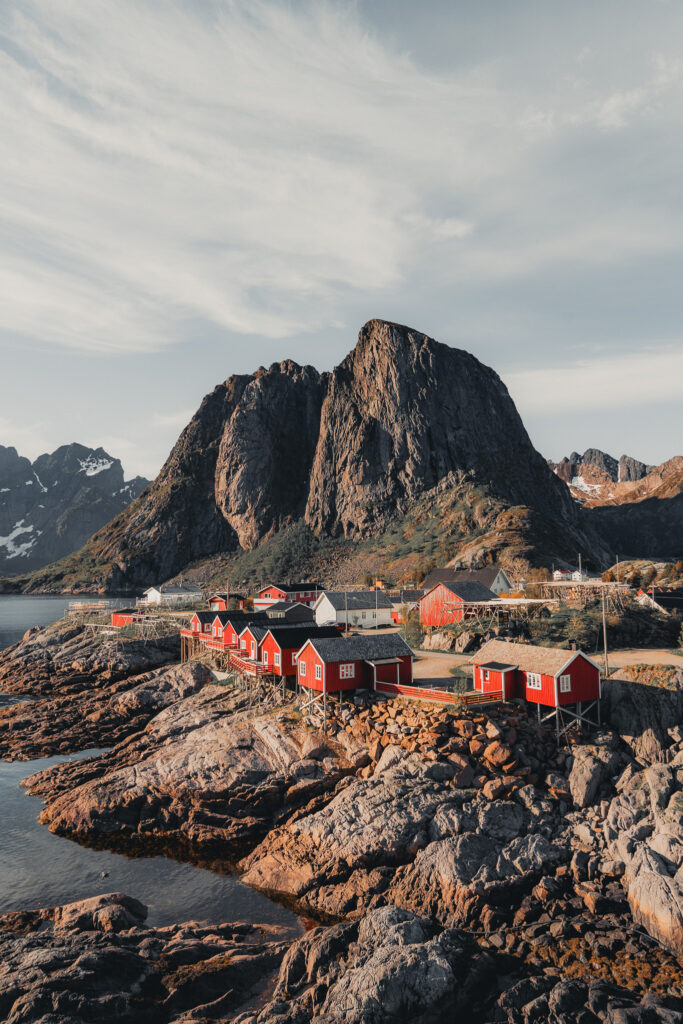
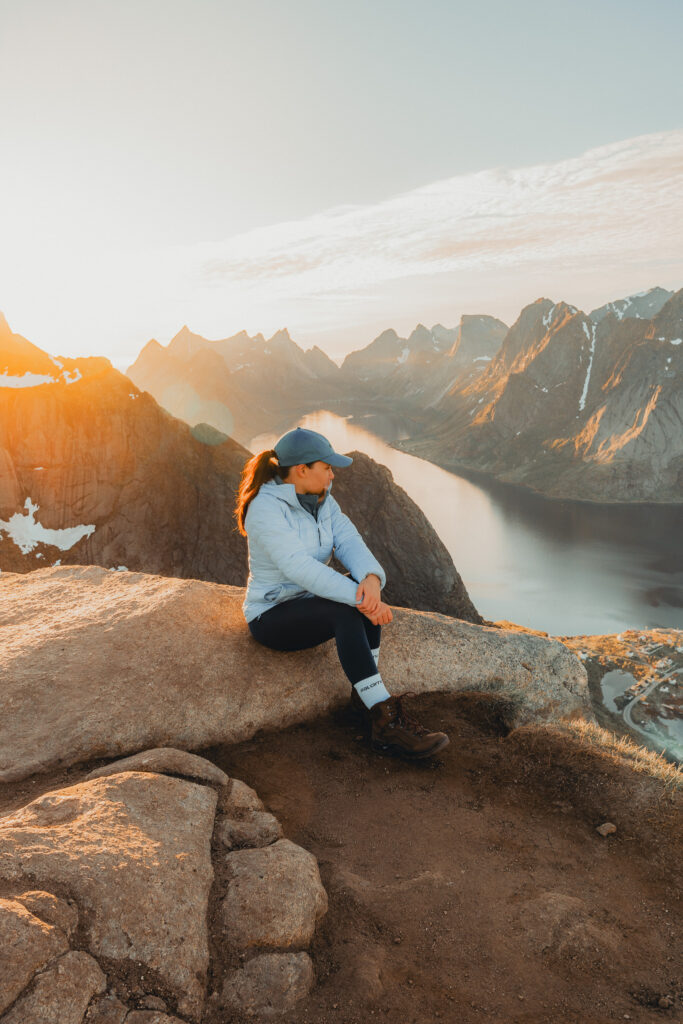
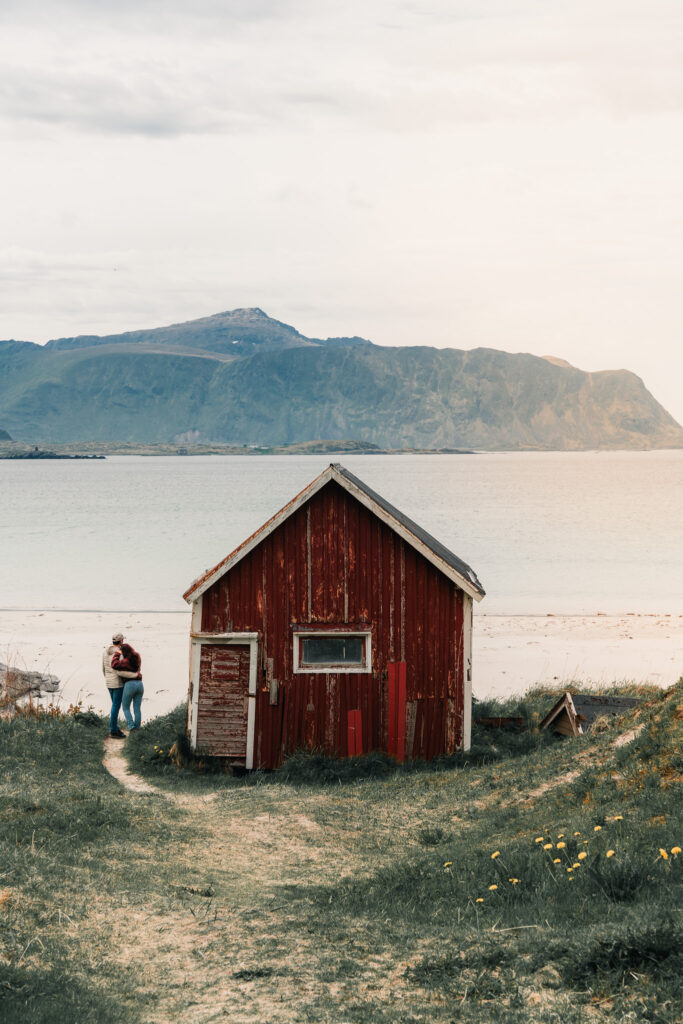
Firstly, the Lofoten is an island archipelago in the north-western part of Norway. It’s around 400km south of Tromsø, but also over 1,500km away from Bergen. The Lofoten consist of several smaller islands. Don’t worry though, you can visit them all without having to take a ferry.
Secondly, the Lofoten are an absolute dream, but they sure aren’t for everyone. Here are some key facts about the Lofoten that will give you an idea about what to expect:
- Even during the summer months, it’s fairly cold on the Lofoten. You can expect around 15°C maximum.
- From the mid of May until the mid of July, the sun does not set and you’ll be surrounded by 24 hours of daylight.
- During the winter months, the Lofoten get very rare sunlight. For example, the sun will only rise for an hour during December.
- You’ll be surrounded by mountains, a lot of water and cute little fisher villages. But you also have to hike to most of the viewpoints.
- Norway, and especially the Lofoten, are more expensive than other European countries.
But all of this also means that you can go hiking at 10pm and you’ll still be surrounded by the most wonderful, warm sunshine. And you can go fishing, because you don’t need a permit to do so in Norway. Moreover, you can also camp nearly everywhere due to the „Allemannsretten“, or everyone’s right.
There are clearly a few ups and downs, but we’d say if you’re into adventure and into being outdoors, then the Lofoten are your absolute dream.
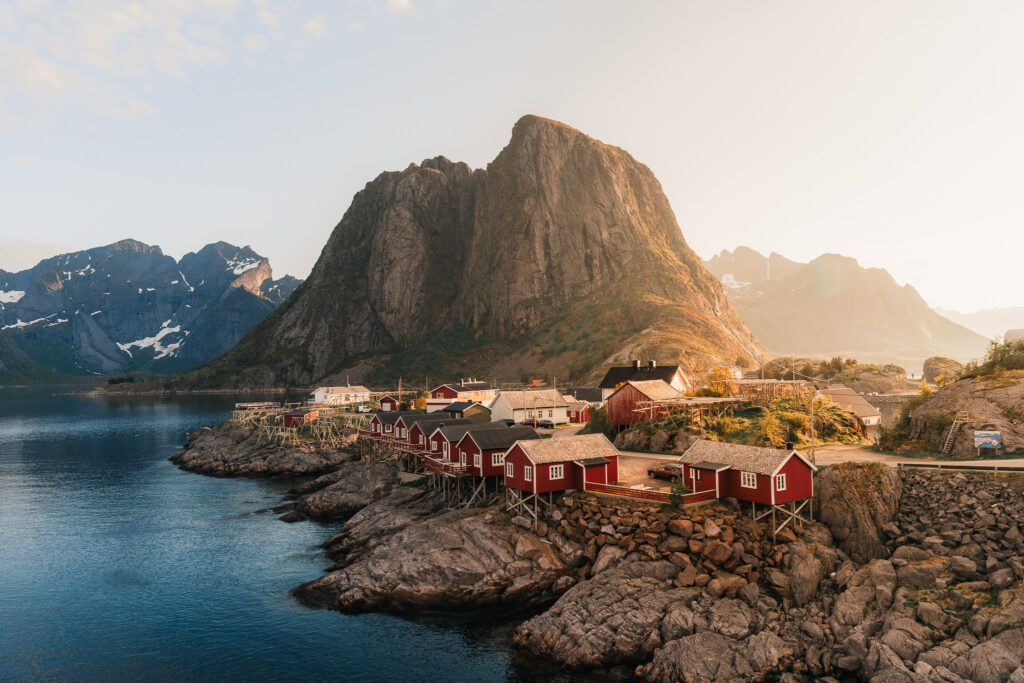
Your guide to the Lofoten: How to get to the Lofoten
Compared to other countries or regions, it’s not that easy to travel to the Lofoten. That’s simply because the islands are so far up north, but also in the western part of Norway. However, you can still travel there by car, plane or even by bus. What you ultimately decide on depends primarily on how much time you want to spend in Lofoten. In the next step, I’ll walk you through every possibility.
Travelling to the Lofoten by plane
This option is ideal for anyone who has limited time available and still wants to make the most out of their vacation. For example, you could be on vacation and you only have 7-14 days to explore Norway. If you’re not wanting to spend ~30 hours driving from your home to the Lofoten, then travelling by plane will be your best bet.
Of course, this will still leave the question open which airport might be the best for your travels, because there are several options again. Firstly, you could be flying into Tromsø and combine your visit to the Lofoten with 2-3 days in Tromsø. But then you’d also need to drive 4 hours until you’re on the Lofoten. Secondly, you could be flying into Bodø and then take the ferry to the Lofoten. You’ll then already arrive at Reine and only have to drive on the Lofoten islands itself. Thirdly, you could also be flying into Evenes where you don’t have to take a ferry and you’ll only drive for around 2 hours until you’re at the first destination.
We’ve opted for the third airport, Evenes, as we found it the most accessible for our travel plans.
Travelling to the Lofoten by car
Little did we know how popular this option is amongst travellers. Especially amongst campers, going by car is one of the best ways to get to the Lofoten. Yes, depending on your starting point, you’ll be driving for 30+ hours. But on the other hand, this also allows you to enjoy the Lofoten on your own pace. Moreover, you can also integrate stops on the way and see Copenhagen, Stockholm or other cities and land sights.
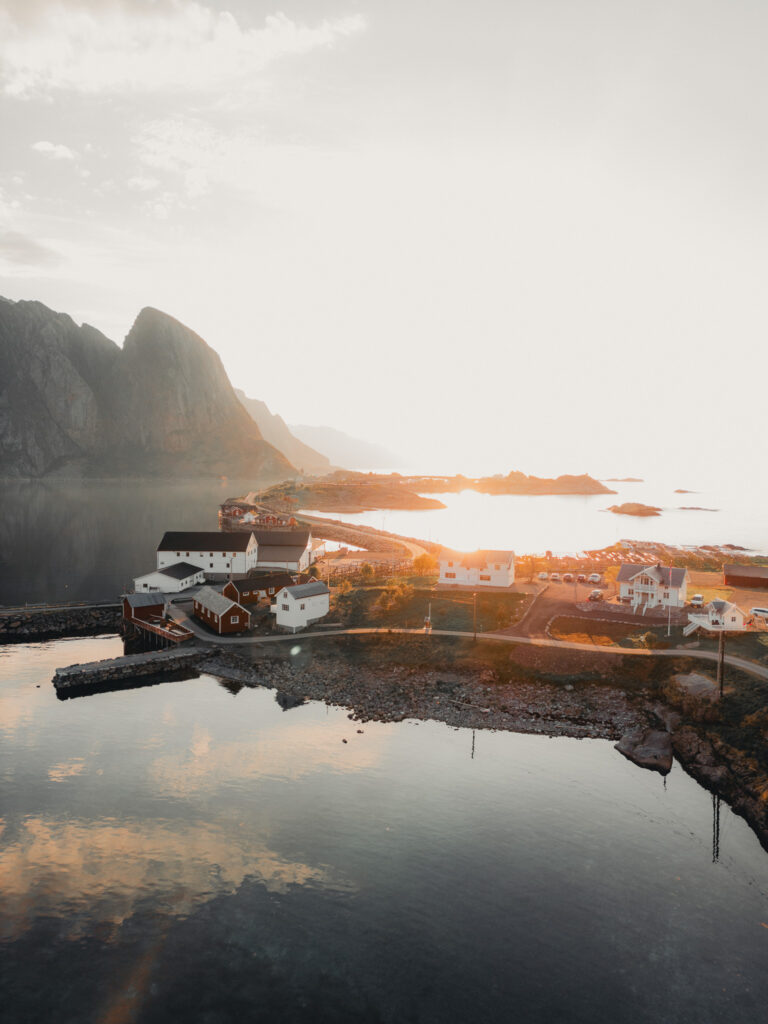
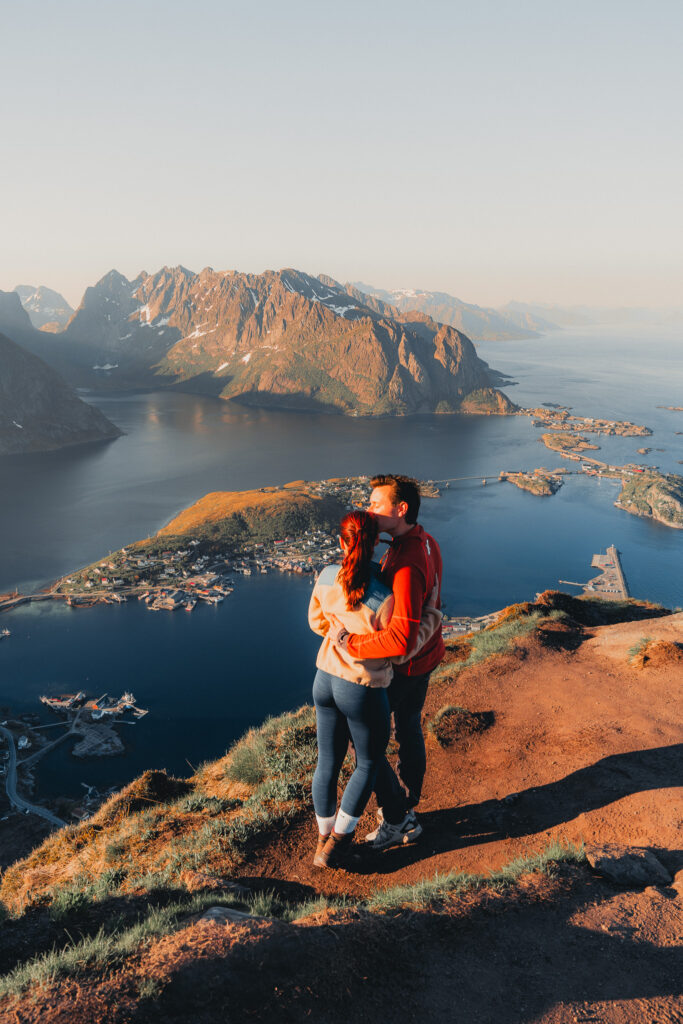
Also, going to Norway by camper is extremely popular due to the Allemannsretten. „Allemannretten“ can be translated to Everyone’s Right and basically means that everyone has the right to enjoy nature. This then allows you to camp nearly everywhere; with a few exceptions.
Travelling to the Lofoten by bus
That’s something we’ve seen not that often, but there are several tour operators which will take you from Germany, the Netherlands or other nearby countries to the Lofoten. Since we don’t have any experience here, we’ll leave the research and pros and cons up to you.
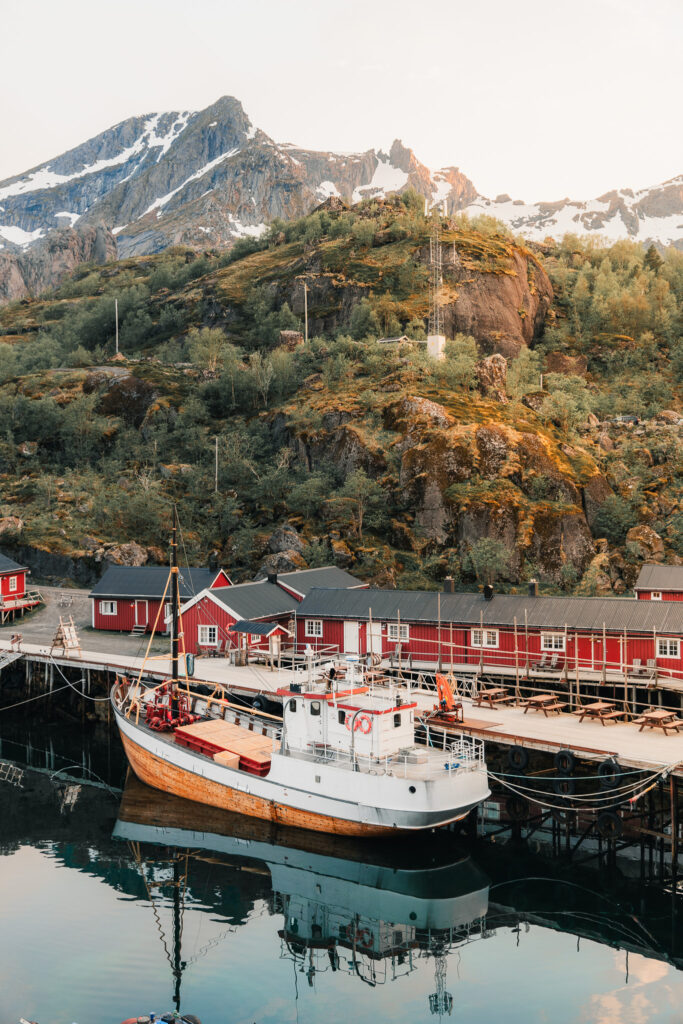
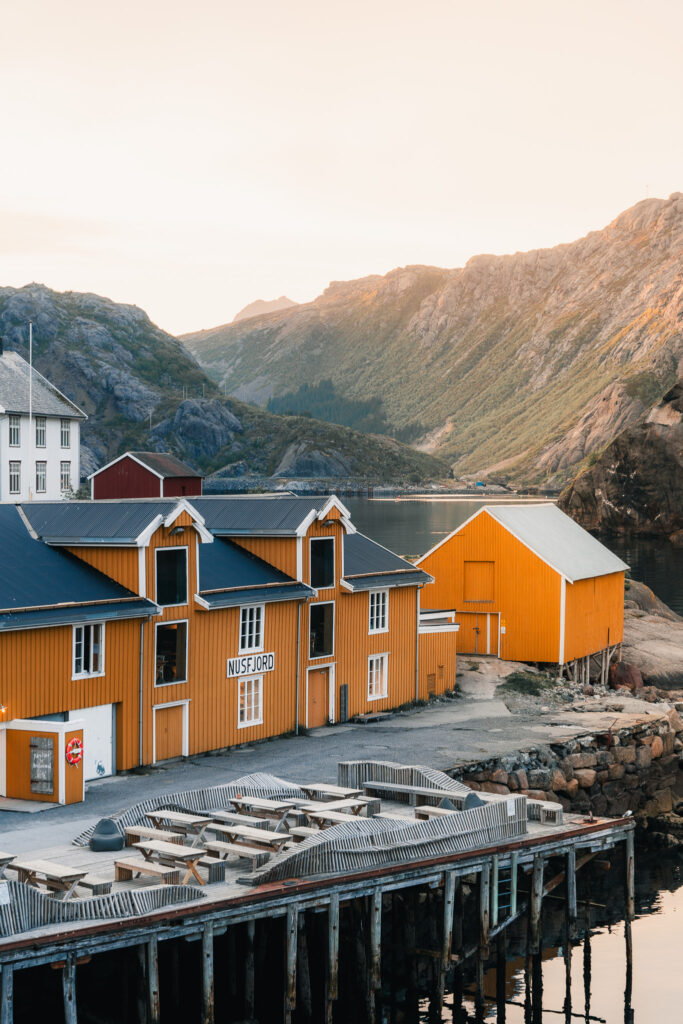
Your ultimate Lofoten guide: How to get around
That’s an easy question, because basically there’s no other option than going by car. Either your own if you’ve drove all the way from your home to the Lofoten or with a rental car. Generally, there are a few destinations that are easy to travel by public transport, but I wouldn’t count the Lofoten amongst them. The region is very stretched out and although we’ve seen some bus stops here and there, we wouldn’t really recommend it. Because one, you’d still have to walk to the hiking trails and second, you’d pretty much have to opt your travel itinerary based on the bus plans.
During our time on the Lofoten, we simply rented our car directly in the Evenes airport. There you’ll find bigger rental companies as well as budget options. Once you’ve collected your rental car, it’s very easy to get around. In Norway, there are normal gas stations as well as options for electric cars.
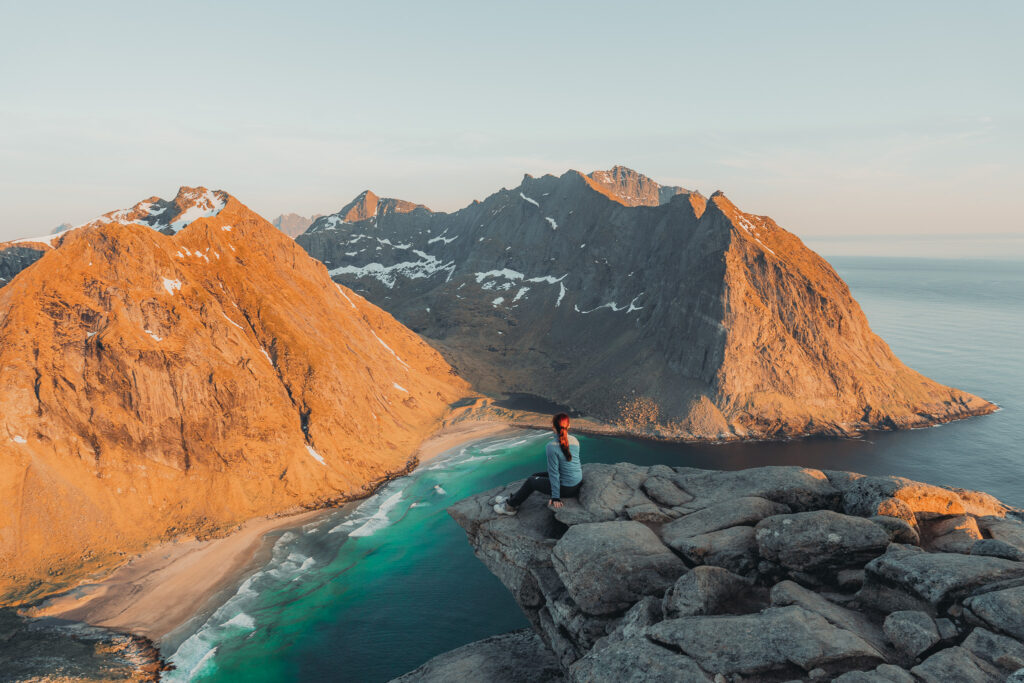
The best time for the Lofoten: Winter or summer?
Choosing the perfect time for your vacation in the Lofoten is crucial for a great holiday. However, if you’d enjoy summer over winter or vice versa highly depends on the activities you want to do. If you’re a winter person and you’d love to see snow-covered mountains, do snowmobile tours or just crave a cozy holiday, then winter might be your best option.
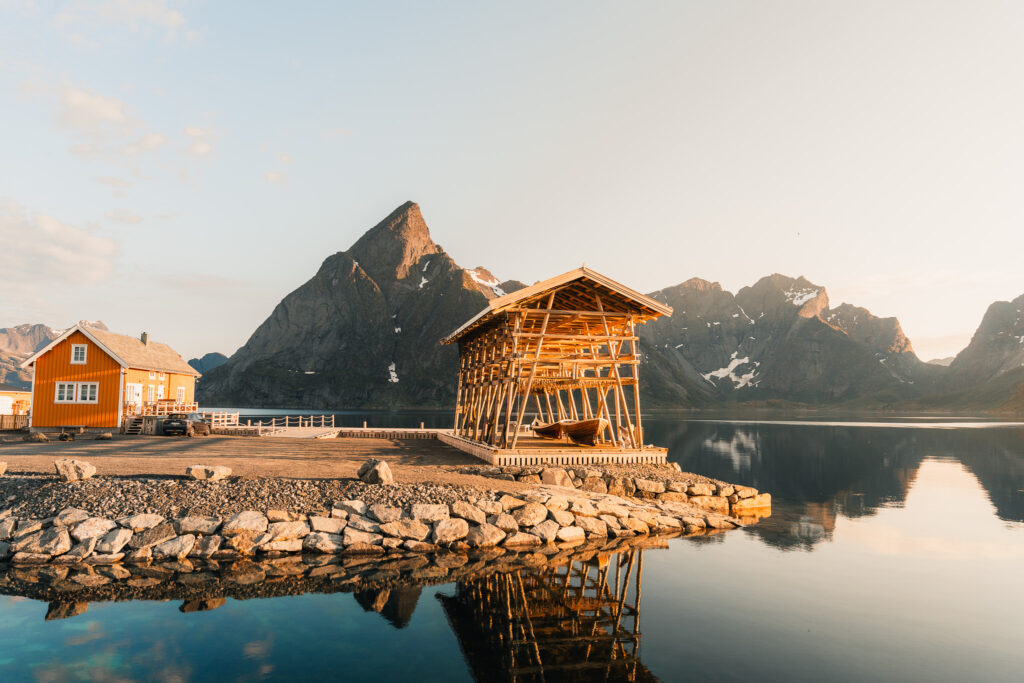


Summer and midnight sun on the Lofoten
On the other hand, if you want to have temperatures around 10-15°C and you want to go hiking, exploring and see the midnight sun, then you need to visit during the summer months. When researching for the best months to travel to the Lofoten, you’ll often see July and August pop up. We haven’t visited during these two months, but we went during June. Mainly, because you can then already see the midnight sun and considered it’s still pre-season, the prices aren’t as high as during high season.
We absolutely loved visiting the Lofoten during June and can recommend it. Especially if you’re visiting for the first time. Not only do you get to experience the islands during the beautiful midnight sun, but you can also roam around and get a first feeling of the Lofoten – or Norway in general.

During the midnight sun, the sun actually never sets. As a result, the sun will only drop near the horizon, but sunset and sunrise are more like one, really long event. Sunset and sunrise are actually about to last for several hours. Sounds great for exploring, doesn’t it?
Also, June will allow you to do all the hikes possible. If you’re visiting during the winter months, the famous Reinebringen is still closed. Actually, you cannot close trails in Norway. But it’s not recommended to go up since it’s really dangerous. All the snow masses can cause Avalanches and there are several warnings!
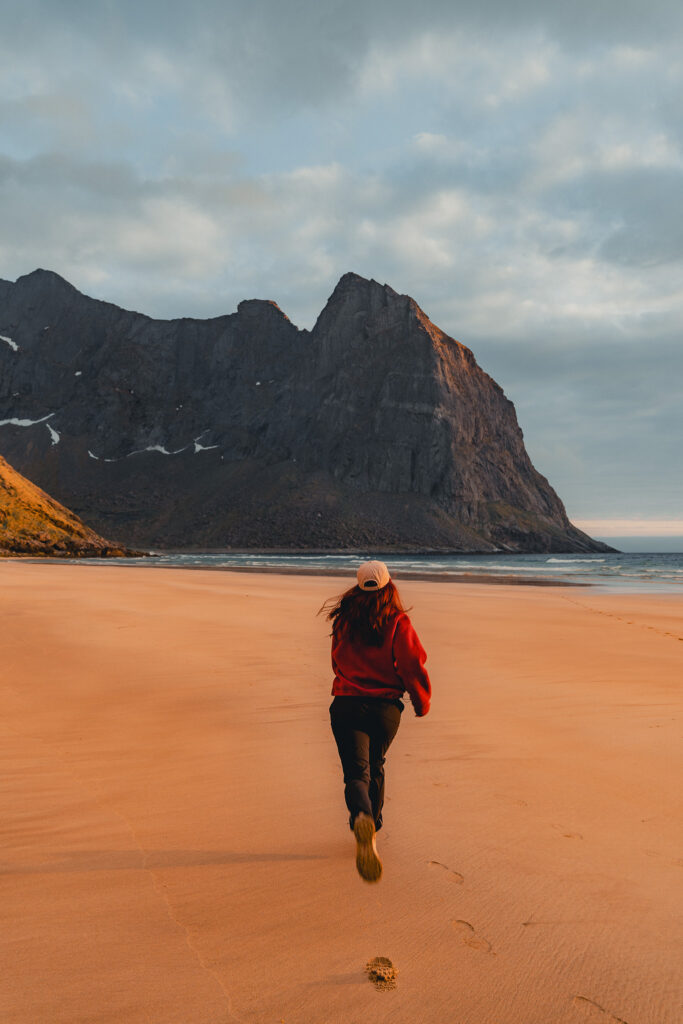
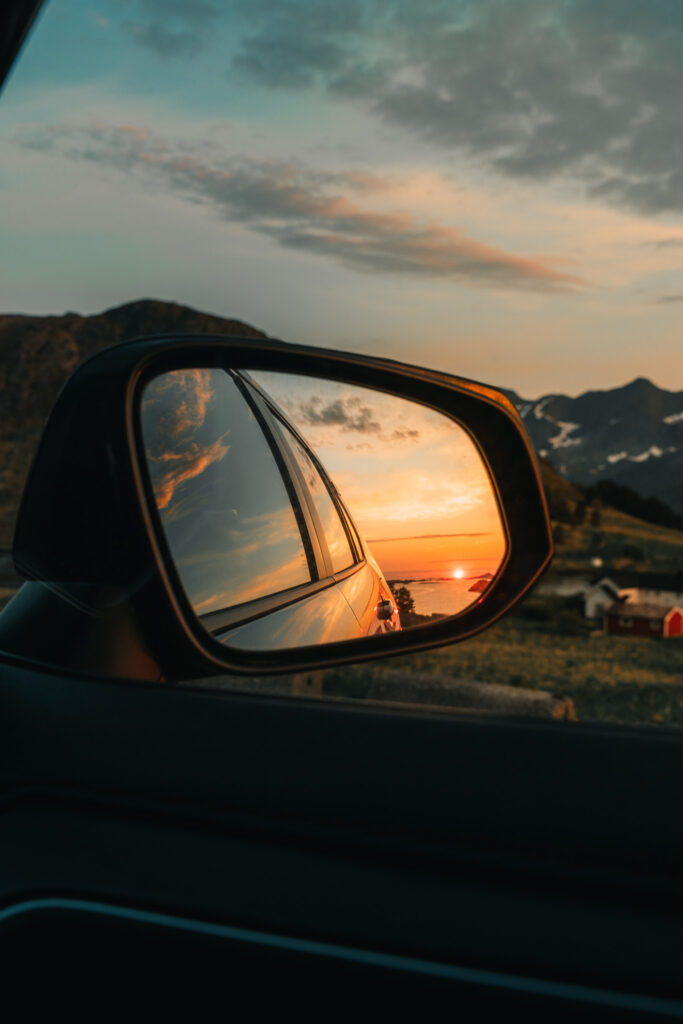
Lofoten Guide: How many days should you plan for the Lofoten?
Generally, we’d recommend to stay for at least 5-7 days. As previously explained, the Lofoten are several islands that stretch out in the north-west of Norway. Once you’re there, you’ll notice that there is so much to do and see that you can barely check off everything within a week. Especially if you’re facing 1-2 days with bad weather.
Moreover, a week also allows you to relax more and soak in the sound of the waves, the smell of fresh mountain air and everything the Lofoten have to offer. We’ve stayed for 8 days on the Lofoten due to the availability of flights. And we absolutely loved it. Due to the number of days, we didn’t feel rushed and we had enough time to tick off everything of our „must see“ list. At the same time, we also had enough time to explore more unknown places. We guarantee you, they will just appear at the side of the road.
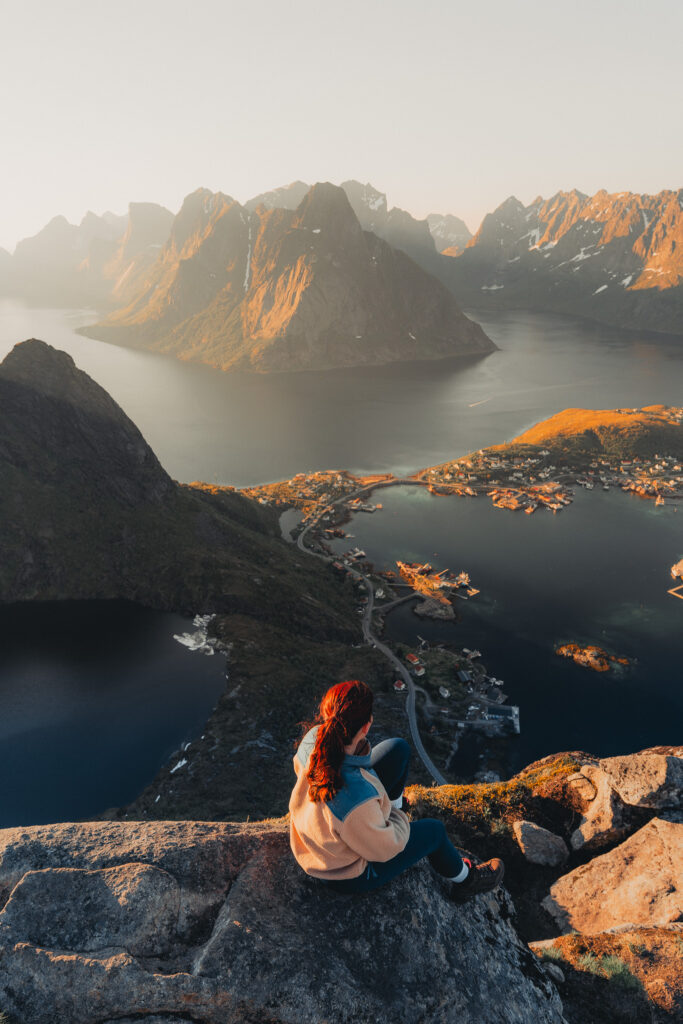
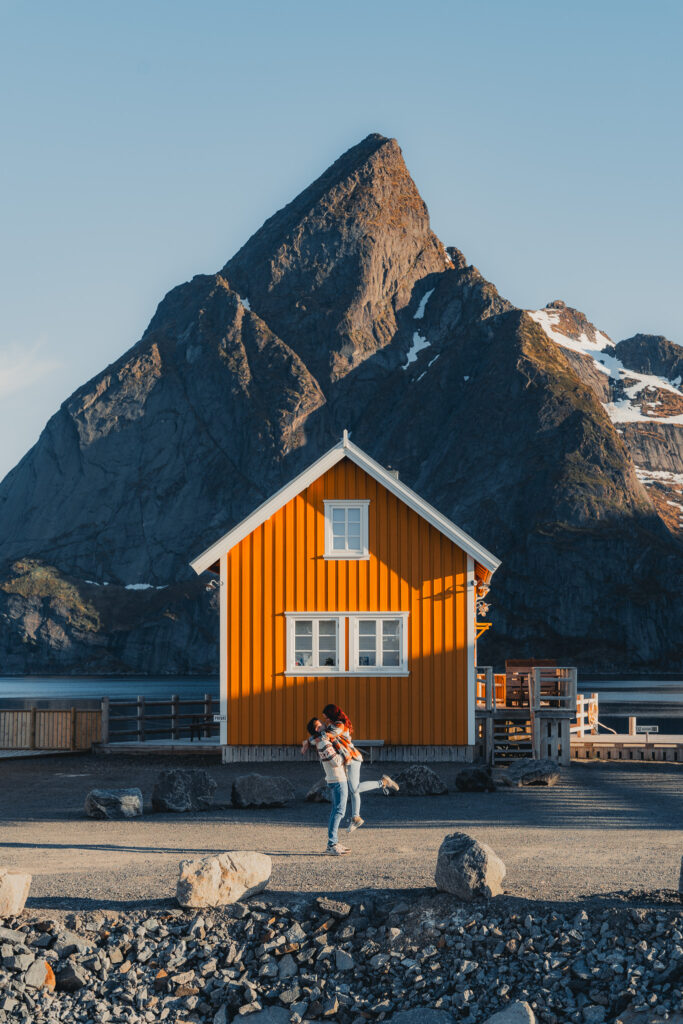
Which are the best places on the Lofoten?
Without a doubt, the Lofoten are one of the few places where it’s really hard to nominate „the best places on the Lofoten„, but here we are. Please keep in mind that we’re both very passionate about hiking or the outdoors and general. This also had an impact on the places which we liked the most on the Lofoten.
Reinebringen
Would a Lofoten Guide be complete without the Reinebringen? Of course not! The Reinebringen is not only one of the most famous hikes in Norway, but it’s also one of the most dangerous hikes. Basically, due to the Allemannsretten (everyone’s right) in Norway, the government cannot close hikes. Due to that, hikes are open year-round although some of them might not be doable during certain weather conditions. As a result there have been many accidents on the Reinebringen trail already.
With that being said, please check the weather conditions before doing this trail. Don’t attempt to hike up to the Reinebringen if it’s really windy, rainy or snowy. That’s mostly because the stairs are steep and exposed during some parts of the hike. And once you’ve completed the hike, you’ll be standing on top of the Reinebringen where you’re even more exposed to the weather.

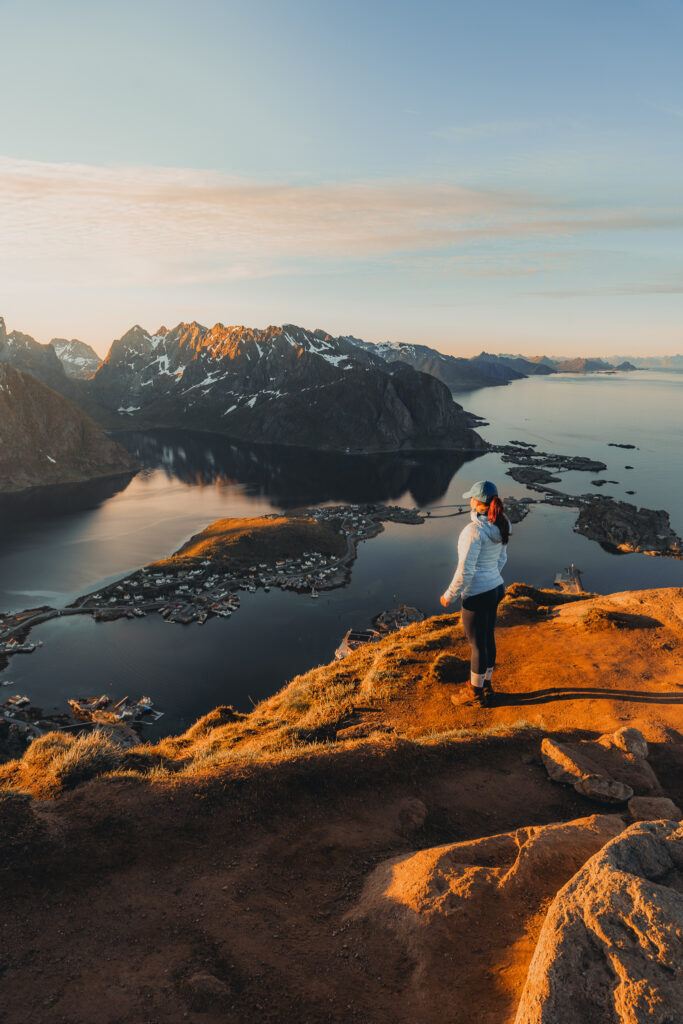
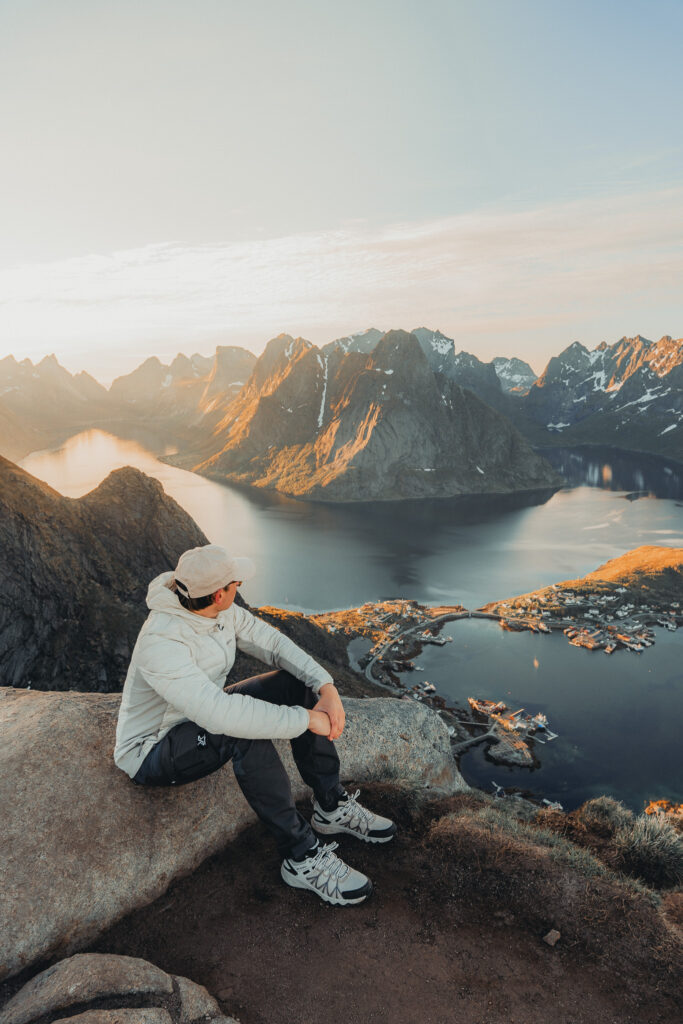
Tips for the Reinebringen hike: Your Lofoten Guide
With this in mind, here are some tips and information about the hike itself:
- The starting point of the Reinebringen hike is nearby the Ramsviktunnelen. There are several parking lots where you can leave your car. While some of them are paid, most of the parking lots are actually free.
- Length of the hike: 1,978 steps. Yes, steps. The whole hiking trail is now covered in stairs to make it safer for you to get up. Nevertheless, the stairs are still built into a steep mountain side.
- Unfortunately, the hike is not suitable for small children or elderly. Although the hike is considered medium difficulty, I wouldn’t really suggest trying.
Nevertheless, the Reinebringen hike is still one of our favorite things to do in the Lofoten. Mostly because of the view. Once you’re standing on top of the mountain, you’ll just be amazed by the view. It’s really unbelievable until you’ve seen it for yourself.
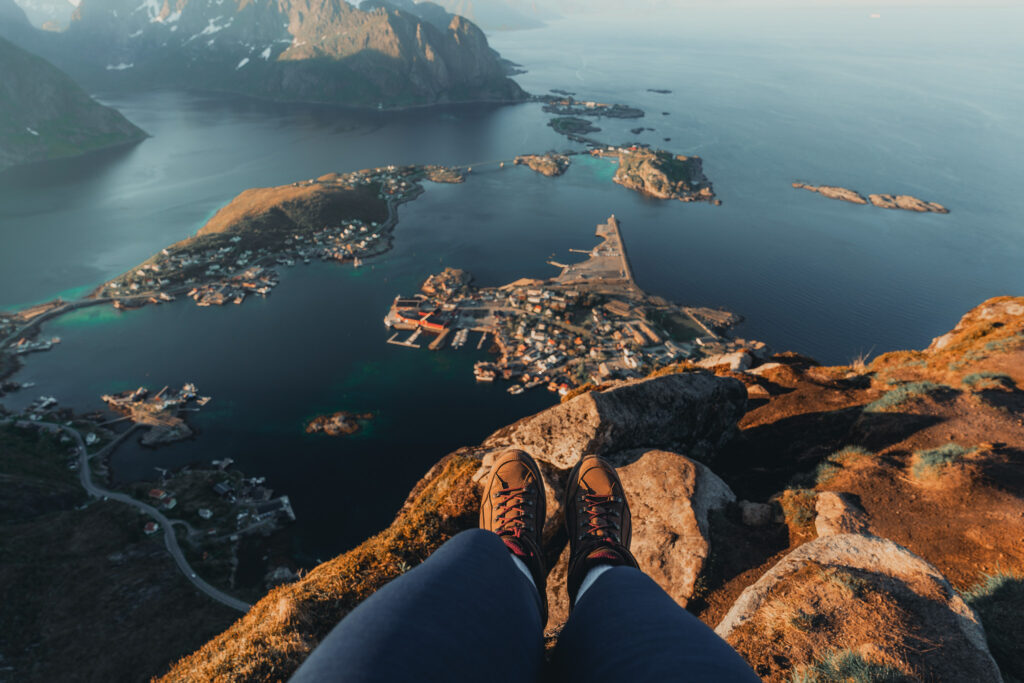
Hamnøy
With that being said, let’s move on to the second spot here in this Lofoten Guide. Hamnøy is a small fishing village not far away from the Reinebringen. It also belongs to the Moskenes Municipality in Nordland county.
This little village is mostly famous because of this photo opportunity. To get the best shot, you have to stand on the sidewalk of the bridge. Honestly, there’s not much more to see, but of course it’s always worth exploring and walking through the village.
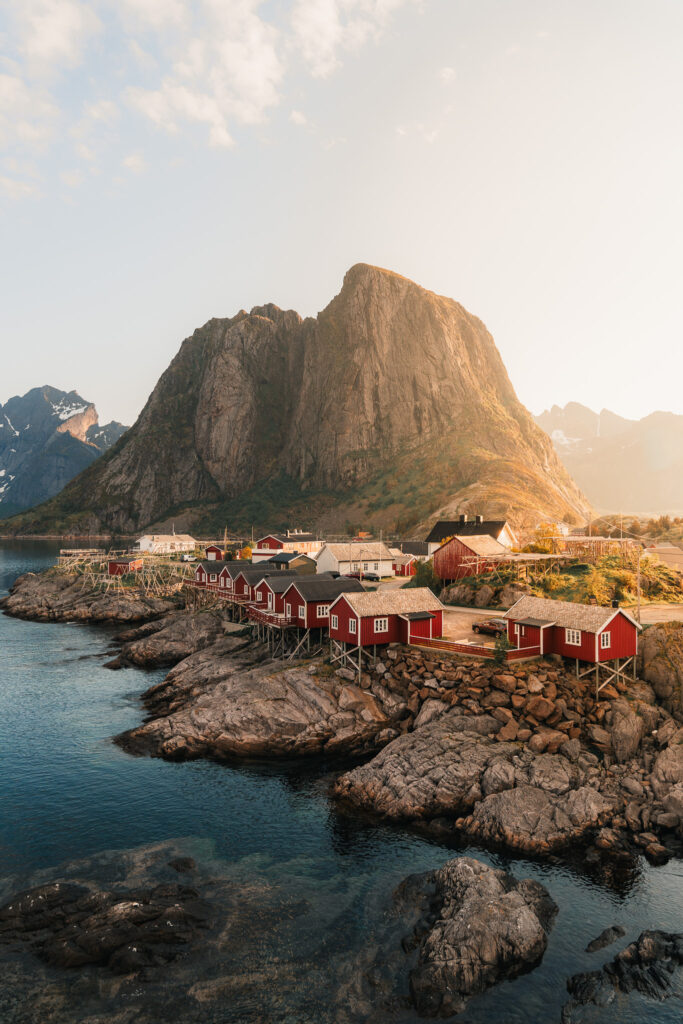
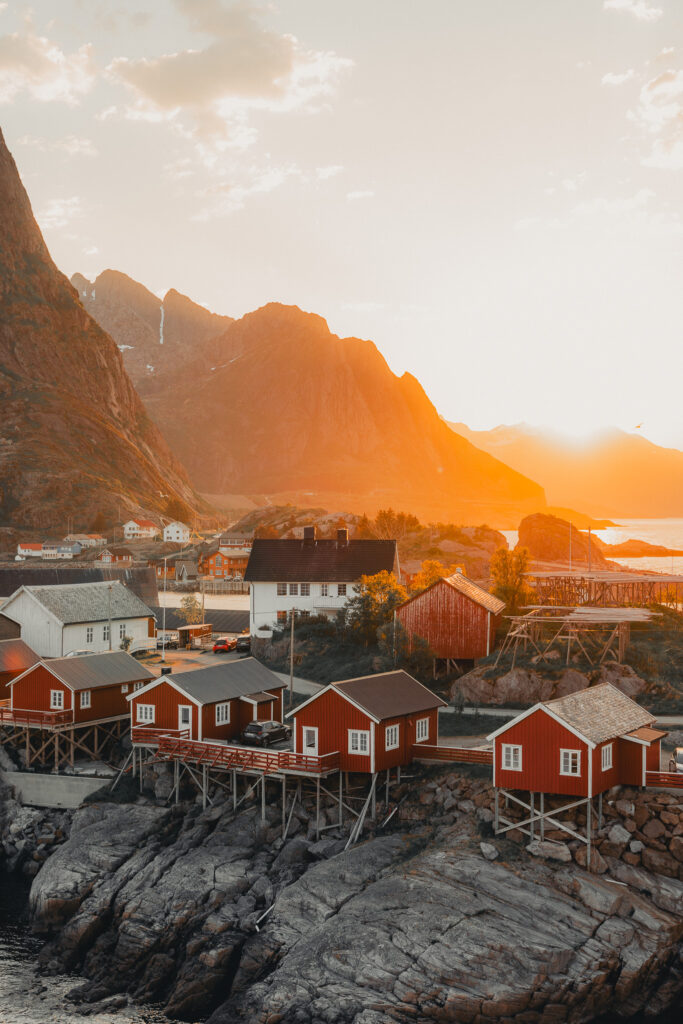
Kvalvika Beach
Another gorgeous spot on the Lofoten islands is Kvalvika Beach. Despite the rather hard hike to the beach, this one is really worth it. Just imagine yourself standing at this beach after three hours of hiking, being able to enjoy it almost all to yourself.
Even though it’s one of the harder hikes on the Lofoten islands, the hike to Kvalvika Beach is really popular. Hence, we’d absolutely recommend starting either early in the morning or later in the evening.

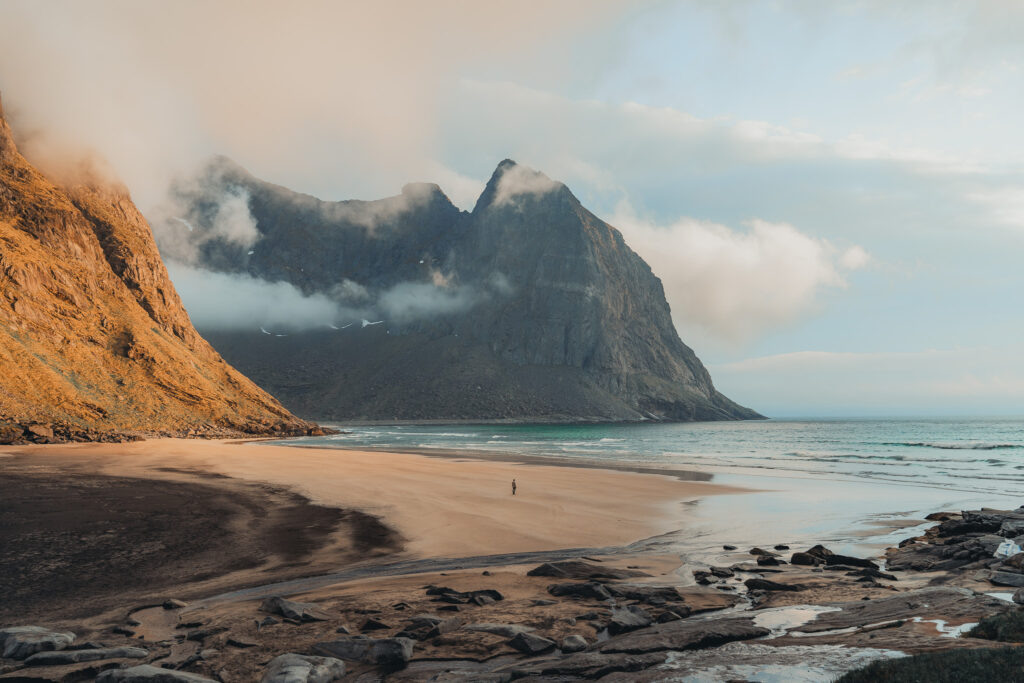
You can start the hike at two points:
- The parking lot on the FV 808 (68°04’06.2″N 13°07’46.2″E), also as „Parking Kvalvika Beach“ on Google Maps.
- A little farm yard where there’s a paid parking lot, also as „Ryten Parking lot“ on Google Maps.
Due to the availability on the first parking lot, we opted for the second route. This route is said to be more demanding, but it’s absolutely doable. Again, we wouldn’t recommend this trail with small children or elderly.
Keep in mind that the total hike will take around 6 hours and pack enough to eat and drink since there are no huts or anything else. Also, we wouldn’t recommend doing the hike during rain or wind as it’s really exposed on the beach.
Sakrisøy
Chiefly known for its yellow house, Sakrisøy is one of the most photographed places on the Lofoten islands. More than that, there’s also a small restaurant on site and you can definitely walk a little and explore the little fishing village.


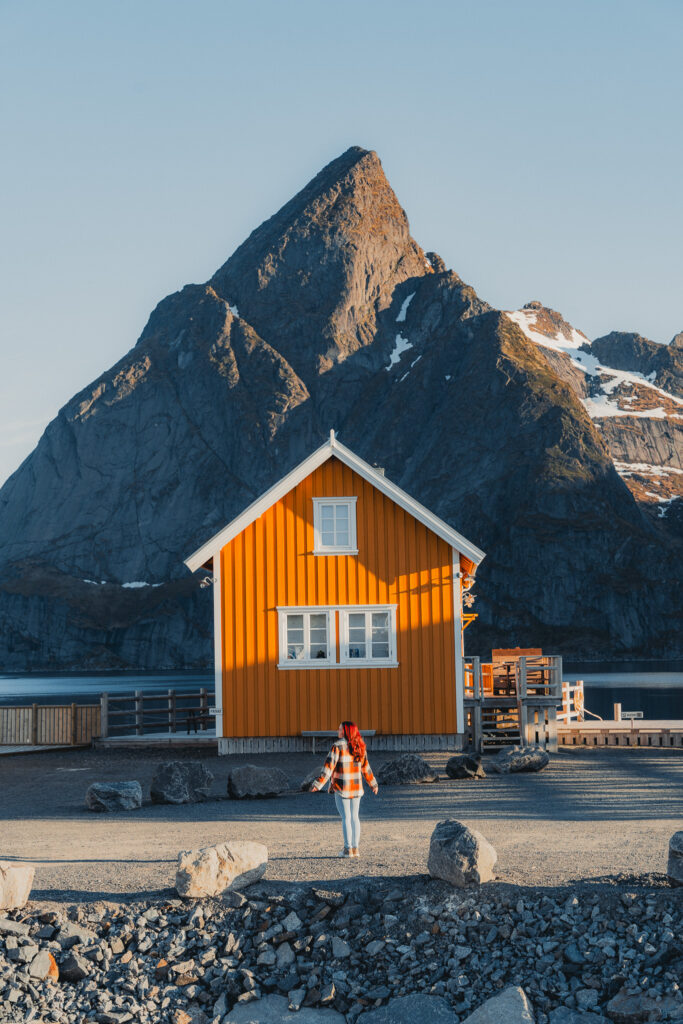

Ramberg Beach / Rambergstranda
Rambergstrands most definitely was another highlight of our trip. First, we just wanted to visit for the small red house as we thought it would be a great photo spot (it is), but Rambergstranda is such a beautiful beach. If it wouldn’t be so cold in Norway, this beach could easily be in the Caribbean as well. It’s a fine sand beach with crystal clear waters. We’ve also seen a lot of people doing water sports here.
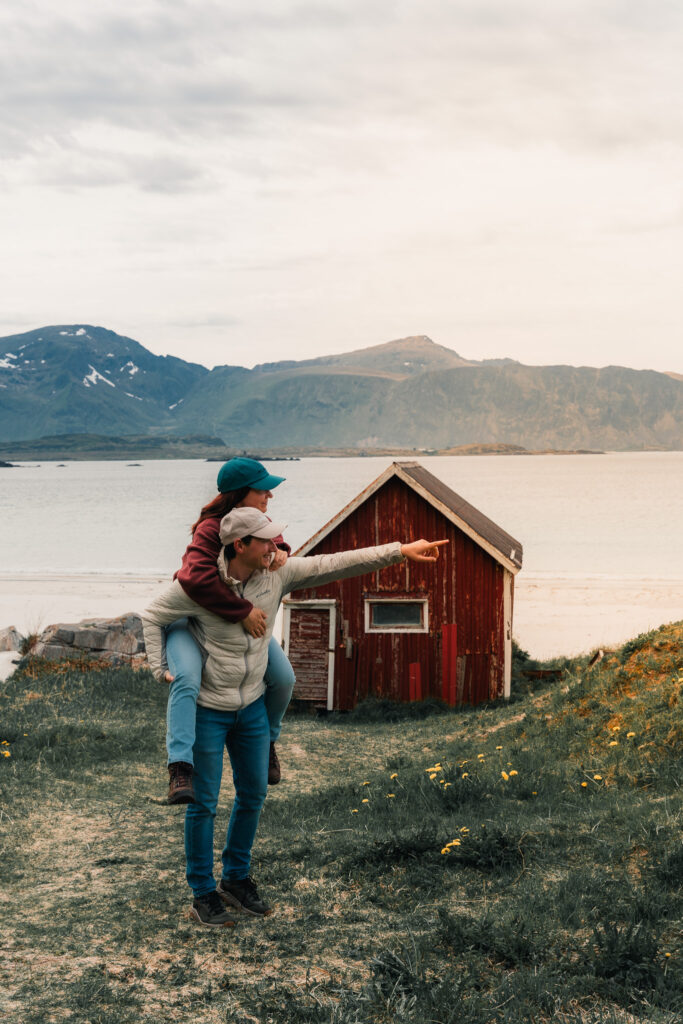
Henningsvaer
Last but not least, there’s Henninsgvaer. Another small fishing village in the Lofoten, but mostly known for its football field. The latter is in the middle of the ocean, or at least it appears so. If you’re visiting Henningsvaer, you definitely have to eat some cinnamon rolls at Lysstoperi Café (right at the entrance of the village).
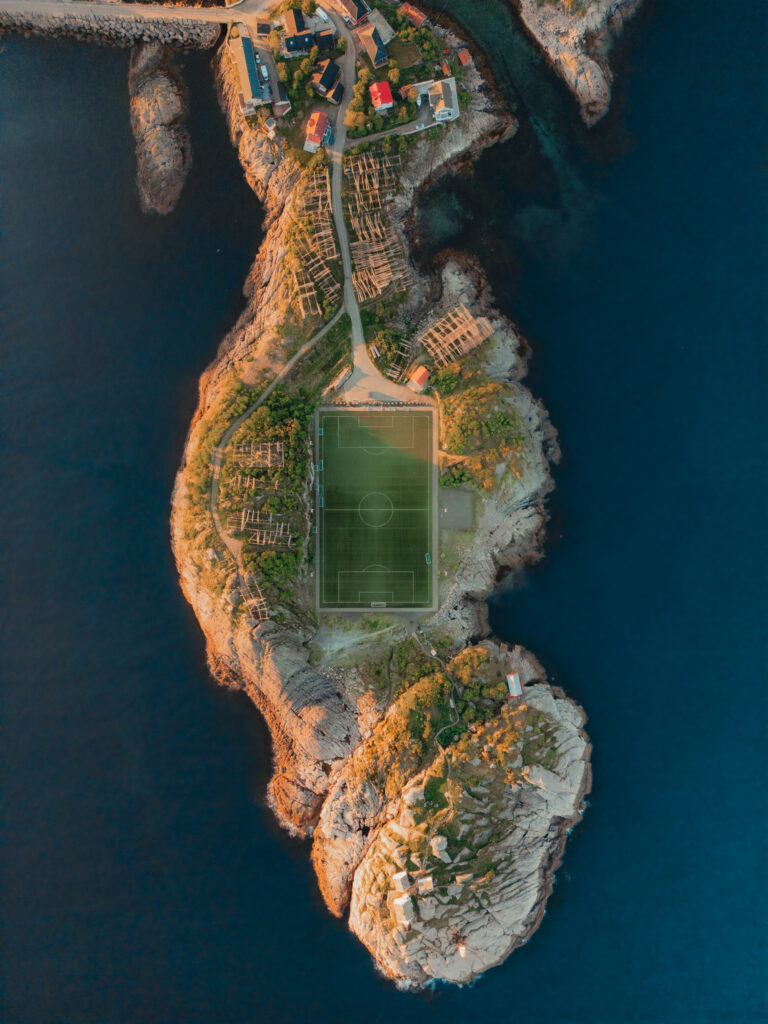

We really hope you’ve enjoyed Lofoten Guide with our best tips for the Lofoten in Norway. Let us know via Instagram DM if you have any other questions – we’re happy to help! 🙂

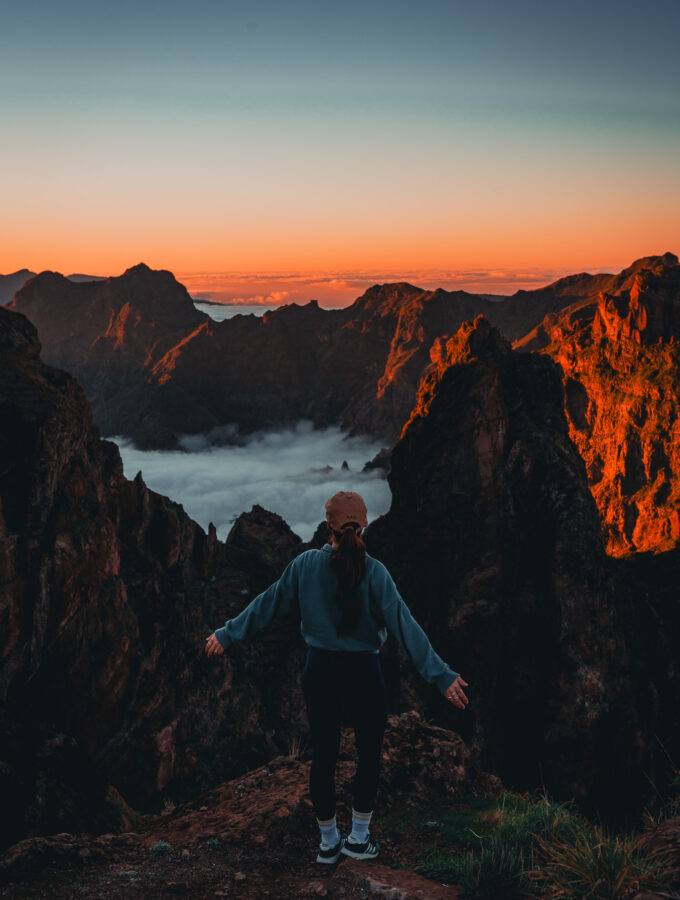
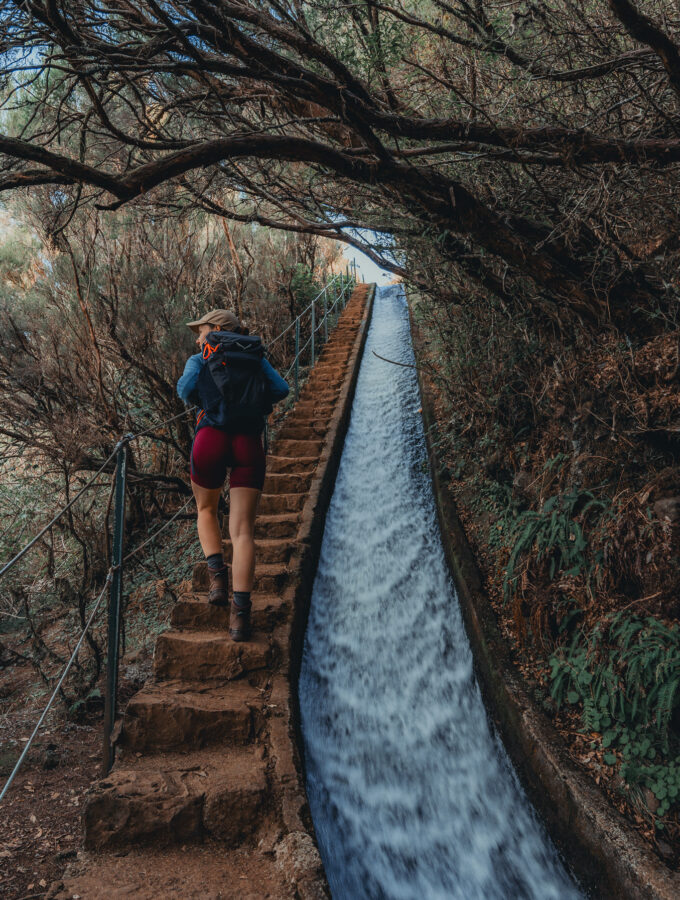
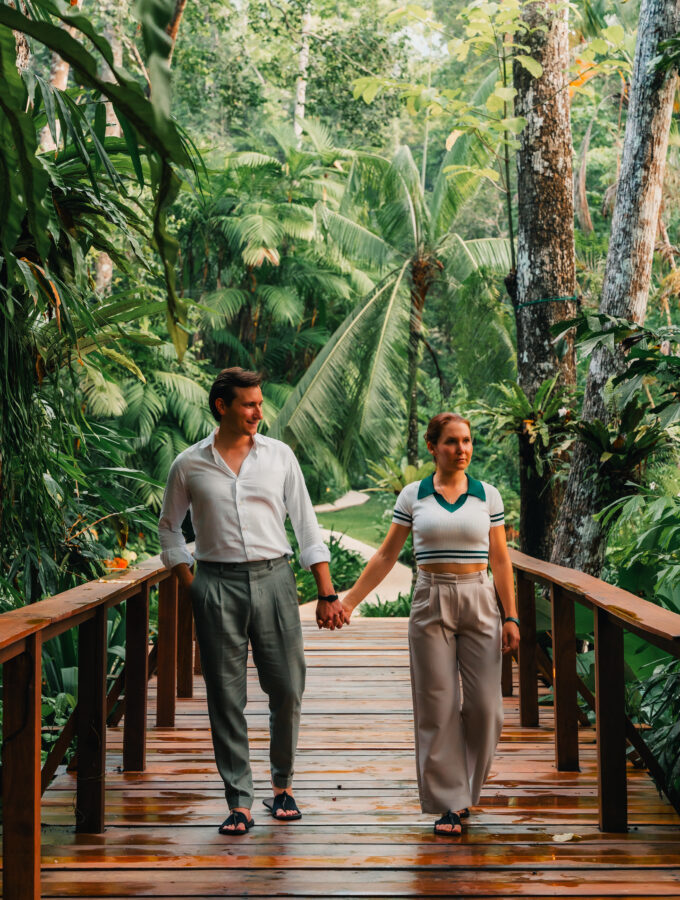
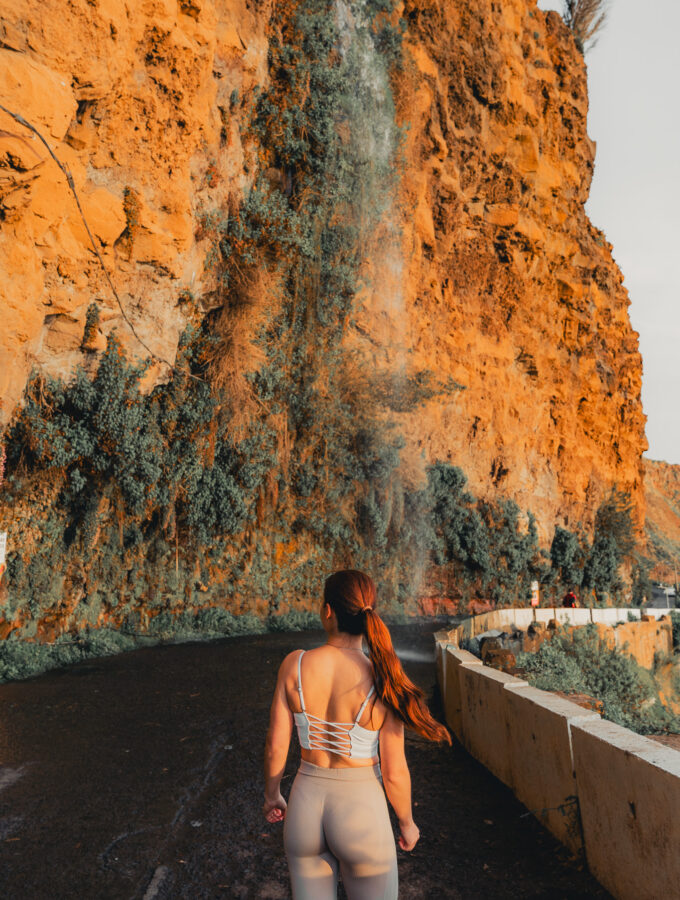
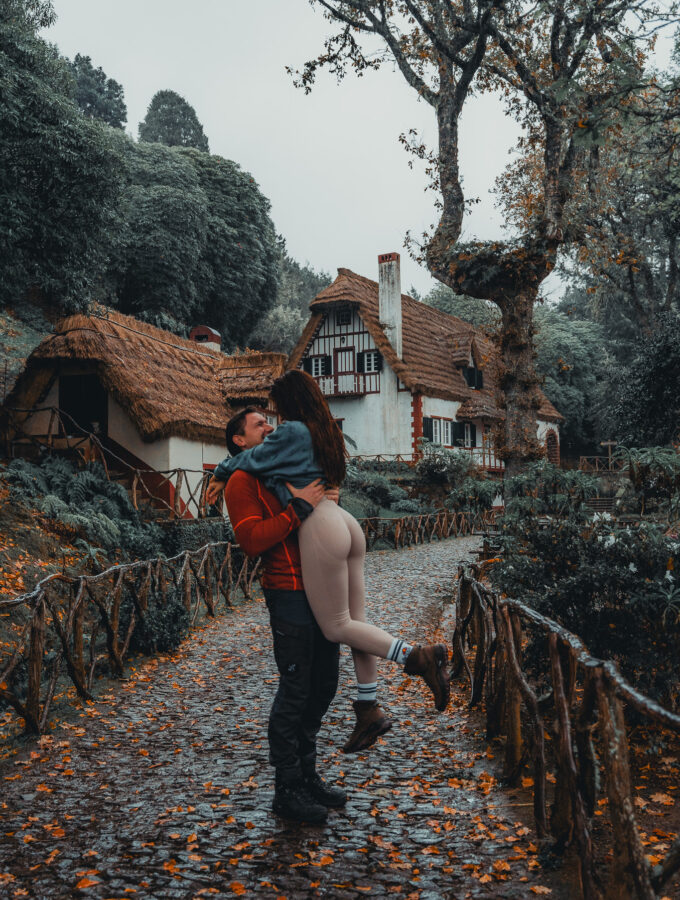
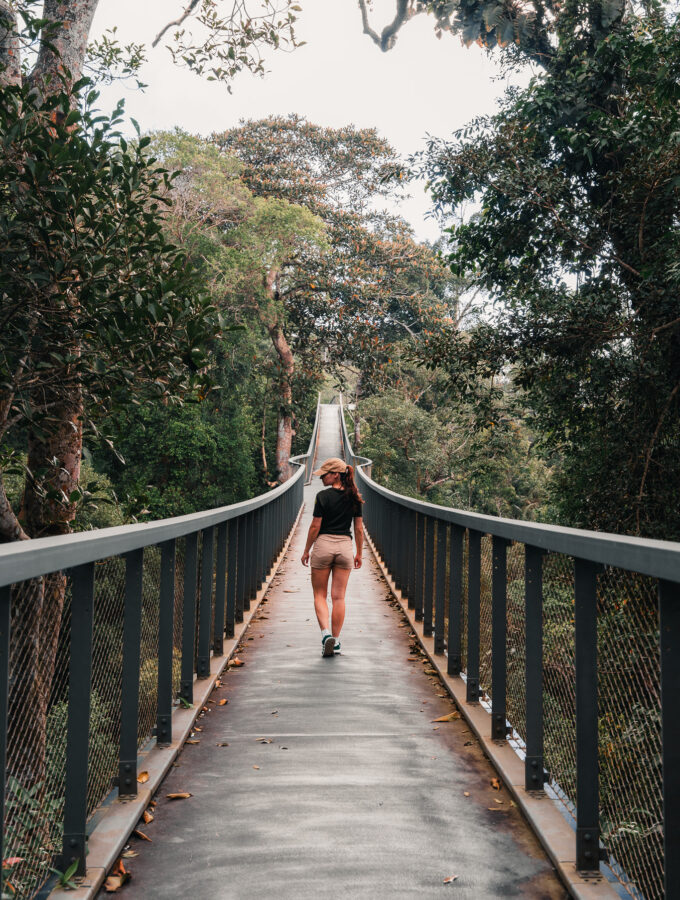
Schreibe einen Kommentar